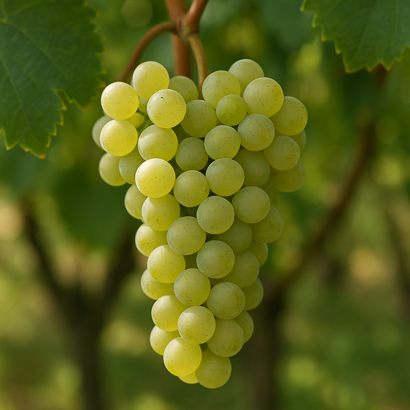Light, crisp, and refreshingly straightforward, Trebbiano is one of Italy’s most widely planted — yet often underappreciated — white grape varieties. Known for its zesty acidity and clean, delicate flavors, Trebbiano has long been the quiet workhorse of Italian viticulture. But in the right hands and terroir, this humble grape can produce wines of surprising elegance and character, showcasing the beauty of simplicity and freshness that define Italy’s best whites.
A Brief History
The story of Trebbiano stretches back over two millennia. Ancient Roman texts reference a white grape known as Vini Tribulanum, believed to be the ancestor of modern Trebbiano. Its resilience, high yield, and adaptability made it a staple across central and southern Italy for centuries.
By the Middle Ages, Trebbiano had spread widely through Tuscany, Umbria, and Emilia-Romagna, often used to produce crisp table wines and the base for balsamic vinegar in Modena. It became one of the backbone varieties of Italian winemaking, valued for its freshness and versatility.
Interestingly, Trebbiano also found a home beyond Italy. It traveled to France, where it became known as Ugni Blanc, the primary grape used in the production of Cognac and Armagnac. Its naturally high acidity and neutral profile made it ideal for distillation, but in the vineyards of Italy, it continued to shine as a pure and refreshing white wine.
Where It’s Grown
Trebbiano is cultivated throughout Italy, with several regional variations and clones that reflect local traditions:
- Tuscany (Trebbiano Toscano): The most common variety, often blended with Malvasia for Orvieto or Frascati wines.
- Abruzzo (Trebbiano d’Abruzzo): Produces some of the finest examples, with greater depth, structure, and minerality.
- Umbria & Emilia-Romagna: Known for clean, bright wines ideal for pairing with local cuisine.
- France: Grown as Ugni Blanc, the foundation of fine Cognac and Armagnac.
- Australia & the United States: Planted in small quantities, producing fresh, easy-drinking styles.
Despite its abundance, Trebbiano’s best expressions come from regions where yields are carefully controlled, allowing greater concentration of flavor and character.
Tasting Notes
Trebbiano is typically light-bodied, crisp, and refreshing, making it an ideal wine for everyday enjoyment. Aromas often include lemon, green apple, pear, and white peach, complemented by subtle hints of almond, herbs, and floral notes.
On the palate, Trebbiano delivers bright acidity and a clean finish, with flavors of citrus, melon, and a touch of minerality. When grown in quality vineyards (especially in Abruzzo), it can take on additional layers of stone fruit, spice, and saline complexity.
Serve well-chilled (around 46–50°F) to highlight its crispness. It pairs perfectly with seafood, light pastas, grilled vegetables, poultry, and mild cheeses — the kind of food that thrives alongside an uncomplicated yet elegant white wine.
The Essence of Trebbiano
Trebbiano may not seek the spotlight, but its charm lies in its honesty and balance. It’s a wine that reflects the Italian philosophy of simplicity — fresh, food-friendly, and full of life.
From the sunlit hills of Abruzzo to the rustic kitchens of Tuscany, Trebbiano embodies the everyday beauty of Italian wine culture. In a world of bold, showy wines, it stands as a reminder that sometimes the most enduring pleasures are found in subtlety, purity, and the quiet elegance of tradition.







